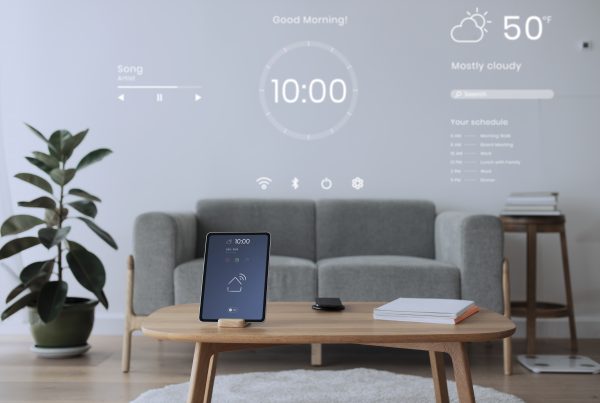If you’re part of the several new citizen developers emerging at companies, whether to supply talent shortage, aid the IT department, or gain extra skills, then you’re probably trying to find your way through a low-code/no-code platform’s features and elements. Everyone has been there, even seasoned developers, and it’s no surprise that it takes some getting used to as you begin navigating these tools.
Indeed, 45% of companies report having citizen developers or “business technologists,” aided by platforms that automate and simplify the coding process. And, there’s probably no better way to learn from these tools than from those who designed them — developers who see value in the tools they create and even use them themselves!
So, as you explore the Appli Builder for your business or personal needs, the Appli team wants to give you a hand by naming and explaining their favorite features and elements to use as seasoned developers!
Deployment – Kayla, UI Developer; Tom, Developer
“Personally, I like not worrying about dealing with deployment for mobile apps. I can just create an app and have it show up on the player without dealing with the Apple App Store or Google Play Store.”
Kayla’s right — most app reviews take two or more days for approval. This means whenever you launch an app or subsequent updates, you’ll most likely have to wait 48 hours to see the fruit of your labor on your phone.
In fact, this is exactly why Tom likes it: “My favorite feature by far is deployment and how easily you can hit update and view your changes on the device. Normal workflows include long build times before the app can open, and it also opens from the beginning, so you lose your spot. In Appli, deploying changes to any screen can be viewed just by refreshing the screen.”
Since Appli’s apps are deployed through the Appli Player (a single app you download to get access to every Appli app), you can see your changes reflected in seconds without having to go through an app store review process. This is much more convenient for those who prefer simplification and speed!
Layout Element – Efrain, Lead Engineer
“The layout element is definitely my favorite. It’s a super flexible element that allows you to display and interact with multiple records in a database in a variety of ways. You design a row and then link elements to the database. Each record in the database becomes a row in the layout element. I’ve used it in every app I’ve made in Appli, from the Invoice and Kit Lister template apps to my personal app.”
This element is crucial for anyone using a database on their app. Linking records means the moment you update a database, the elements tied to this information will automatically update as well. Many apps rely on this, whether it’s displaying user information or updating a process status.
For more information on how to use the Layout element, click here.
Button Element – Linda, Front-End Engineer; Andre, Writer and Developer
Two of our colleagues have chosen the button as their favorite element!
Linda said, “I like how it has many customization options, from a ripple effect to rounded corners. In addition to that, there’s a large library of icons available to select from, which removes the need to search for and add them yourself. Buttons are a common user interface item and being able to quickly create a variety of them facilitates the app-designing process.”
Andre agreed, “It is the most important element because it’s usually the one that enables the user’s intent to happen. When the user wants to do something, they will more often than not end up clicking a button.”
They’re spot on — what’s an app without buttons? They originate almost every action but have never been a straightforward feature to code. With the Appli Builder, you can simply use the button element to add a button that will lead to an action, and configure it with the platform’s low-code capabilities.
Browser Element – Tom, Developer
“My favorite element is the browser element because it’s versatile and enables the inclusion of controls and tools that are beyond the scope of low-code or coding platforms — it’s also used for our maps and chart element!”
The browser element is crucial if you want to include elements from a webpage — any webpage — on your app. For example, you already have a web app with a feedback form in it, and you’d like to link that to your newest mobile app. In that case, you can simply use the browse element to include that link and allow people to leave your feedback from your mobile app too.
Login and Create Account Elements – Mark, Developer
“I like to use these elements and also think they’re really cool. And they’re great because they make it easy to add user access to your app, and everything is already built in. As a developer, I don’t need to write any code that deals with security or passwords and I don’t need to deal with email verification. It’s all handled by Appli, and there are nice hooks so that I can do things with my app once a user is logged in.
There are also ways to build your own login UI using low-code in Appli, which is nice and more customizable, but I love the simplicity of dropping in a Login element and having it ready to go out of the box.”
If you’ve ever wanted to add an extra layer of security to your app by allowing your users to create an account and log in, you’ll love these two elements. By simply clicking it and placing it wherever you want on your interface, you’ll automatically have ‘login’ and ‘create account’ options without hefty coding involved.
Knowing what our developers love from low-code/no-code platforms, especially our very own Appli, can help you get started on the most useful and simplified features to include in your app. And there’s more where this came from: You can visit our Documentation page to learn more about every and any feature and element in the Appli Builder, from helpful tutorials to handy guides.
Have these testimonies inspired you to begin your own mobile or web app? Download the Appli Builder and kickstart your low-code/no-code project today!







